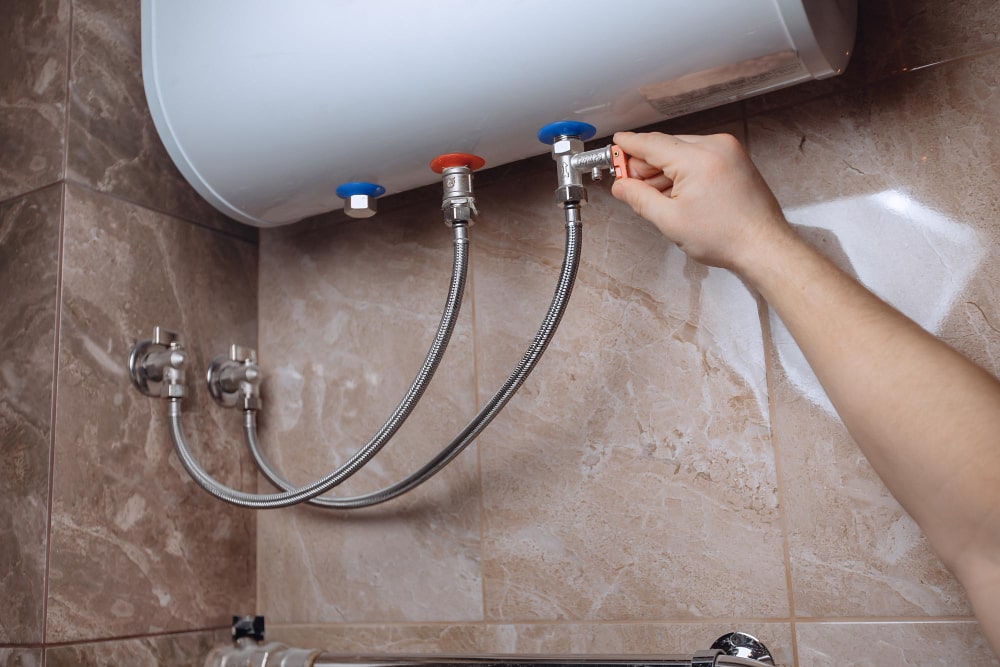Easy Guide to Caring for Your Home's Hot Water System
Easy Guide to Caring for Your Home's Hot Water System
Blog Article
What're your opinions concerning Tips on Maintaining a Water Heater?

Warm water is vital for everyday convenience, whether it's for a rejuvenating shower or washing meals. To ensure your hot water system runs effectively and lasts much longer, normal maintenance is crucial. This write-up offers useful pointers and understandings on just how to keep your home's warm water system to prevent interruptions and expensive repair services.
Introduction
Maintaining your home's warm water system could seem challenging, however with a couple of easy steps, you can guarantee it operates efficiently for several years ahead. This guide covers everything from understanding your warm water system to do it yourself upkeep suggestions and understanding when to contact expert assistance.
Relevance of Preserving Your Hot Water System
Routine upkeep not just extends the life expectancy of your hot water system however additionally guarantees it runs successfully. Overlooking upkeep can result in lowered effectiveness, greater power bills, and also early failure of the system.
Signs Your Warm Water System Requirements Upkeep
Knowing when your hot water system needs interest can prevent significant issues. Keep an eye out for indicators such as irregular water temperature level, odd noises from the heater, or corroded water.
Flushing the Water Heater
Flushing your hot water heater gets rid of sediment build-up, boosting performance and lengthening its life.
Monitoring and Changing Anode Rods
Anode rods stop rust inside the storage tank. Checking and changing them when worn is important.
Facility Concerns Requiring Professional Aid
Examples include significant leakages, electrical problems, or if your water heater is constantly underperforming.
Regular Professional Upkeep Conveniences
Professional upkeep can include detailed examinations, tune-ups, and guaranteeing conformity with safety requirements.
Evaluating and Adjusting Temperature Level Settings
Changing the temperature setups guarantees optimal performance and security.
Do It Yourself Tips for Upkeep
You can perform a number of upkeep tasks on your own to maintain your warm water system in top problem.
Checking for Leakages
Regularly check pipes and links for leaks, as these can result in water damages and greater expenses.
Understanding Your Hot Water System
Before diving right into maintenance jobs, it's helpful to recognize the standard elements of your warm water system. Commonly, this consists of the water heater itself, pipes, anode rods, and temperature controls.
Regular Monthly Upkeep Tasks
Regular month-to-month checks can help capture small concerns prior to they escalate.
Examining Stress Alleviation Valves
Examining the stress relief valve guarantees it works correctly and stops too much pressure buildup.
Protecting Pipes
Shielding warm water pipelines reduces warm loss and can conserve energy.
When to Call a Professional
While do it yourself upkeep is valuable, some problems require professional expertise.
Conclusion
Routine upkeep of your home's warm water system is necessary for performance, long life, and expense financial savings. By adhering to these ideas and recognizing when to look for professional aid, you can guarantee a reputable supply of warm water without unforeseen disruptions.
How to Maintain an Instant Hot Water Heater
Before tinkering with your hot water heater, make sure that it’s not powered on. You also have to turn off the main circuit breaker and shut off the main gas line to prevent accidents. Also turn off the water valves connected to your unit to prevent water from flowing into and out of the appliance. 2. When you’re done, you have to detach the purge valves’ caps. These look like the letter “T†and are situated on either side of the water valves. Doing so will release any pressure that has accumulated inside the valves while at the same time avoid hot water from shooting out and burning your skin. 3. When the purge valves’ caps are removed, you have to connect your hosing lines to the valves. Your unit should have come with three hoses but if it didn’t, you can purchase these things from any hardware or home repair shops. You can also get them from retail stores that sell water heating systems. Read the user’s manual and follow it to complete this task properly. When the hosing lines are connected, open the purge port’s valves. 4. You should never use harsh chemical cleaners or solutions when cleaning your unit. Make use of white vinegar instead. It should be undiluted and you’ll probably use about 2 gallons. 5. Now flush your water heater. This task should probably take about 40 minutes. We can’t give you specific directions for this because the procedure is carried out depending on the type, model and brand of your heater. With that being said, refer to the user’s manual. 6. When you’re done draining the unit, you have to turn off the purge port valves again. Remove the hosing lines that you earlier installed on each of the water valves. Put the valve caps (purge port) back in their respective places and be very careful so as not to damage the rubber discs that are found inside these caps. 7. Now that everything’s back in place, check your user’s manual again to find out how to reactivate your water heating system. 8. Once it is working, turn one of your hot water faucets on just to let air pass through the heater’s water supply pipes. Leave the tap on until water flows smoothly out of it. https://www.orrplumbing.com/blog/2014/september/how-to-maintain-an-instant-hot-water-heater/

I discovered that blog posting about Tips on Maintaining a Water Heater while doing a lookup on the internet. For those who enjoyed our blog posting please remember to share it. I praise you for being here. Kindly come by our website back soon.
Call Today Report this page